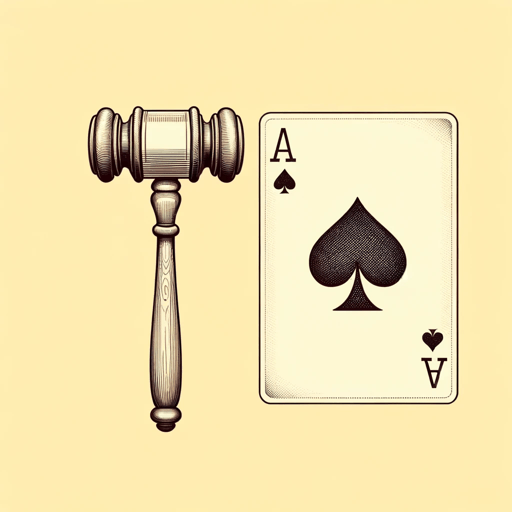57 pages • 1 hour read
John GrishamThe Guardians
Fiction | Novel | Adult | Published in 2019A modern alternative to SparkNotes and CliffsNotes, SuperSummary offers high-quality Study Guides with detailed chapter summaries and analysis of major themes, characters, and more.
Summary and Study Guide
Overview
The Guardians is a legal thriller written by John Grisham. Published in 2020, it’s inspired by the true story of Joe Bryan, a man who was wrongfully convicted of killing his wife and incarcerated for 33 years before being exonerated. An international best-selling author, Grisham was a lawyer for nine years before transitioning to writing full-time. He is a vocal and financial supporter of The Innocence Project, a nonprofit that works to get wrongfully convicted people exonerated—exactly like the Guardian Ministries organization described in The Guardians. Grisham’s legal knowledge is apparent in The Guardians, which lays bare flaws in the US criminal justice system while exploring broader societal ills like racism. This study guide refers to the 2020 Dell Mass Market Paperback edition of the novel.
Disclaimer: Please beware that The Guardians and this study guide touch on emotionally challenging and possibly triggering topics, including violence (murder/rape/torture), drug use, and racism (including use of racial slurs).
Plot Summary
The Guardians is narrated in the first person by Cullen Post, a lawyer and Episcopal pastor, who works for Guardian Ministries, an organization that tries to free wrongfully convicted people from prison. In his career at Guardian Ministries, Post has helped exonerate eight people. When the book opens, he is heavily involved in two more cases. One involves Duke Russell, a white man wrongfully convicted of the rape and murder of a young woman, Emily Broone. The other involves Quincy Miller, a Black man wrongfully convicted of the murder of a lawyer, Keith Russo, in Seabrook, Florida, 23 years ago. The book follows Post and his colleagues at Guardian Ministries as they work to free these two men.
Duke’s story is the B narrative, a subplot that is simpler and secondary to the A narrative, which is Quincy’s story. Although the book opens with Duke’s case, leading the reader to believe this will be the primary plot, Duke is exonerated a little over half-way through the book. The bulk of the narrative is dedicated to unraveling the complexities of Quincy’s case. The chapters follow Post and his colleagues as they piece together many different pieces of evidence to prove Quincy was framed for Keith’s murder. The work requires illuminating problems with the original case, such as the false testimonies given by witnesses who were coerced to lie to frame Quincy—and the dubious nature of fraudulent “expert” testimonies leveraging sham sciences like blood spatter, which have been proven to be “junk science” in the 23 years since Quincy was locked away.
The work Guardian Ministries does is tedious, involving tracking down people from decades ago. It’s also dangerous. Post learns that Quincy’s original defense lawyer Tyler Townsend was abducted and tortured while he was preparing to appeal Quincy’s conviction. As a result, Tyler did a shoddy job on the appeal on purpose, leaving Quincy stuck in jail. The dangerous nature of Quincy’s case becomes more apparent when it’s revealed that he was framed by Bradley Pfitzner, the former sheriff of Seabrook, who was in the employ of a notorious drug cartel, the Saltillo Cartel. Post learns that Keith had been working for the Cartel but then agreed to serve as an informant for the DEA (Drug Enforcement Agency). The Cartel discovered Keith was double-crossing them and had him killed. The Cartel paid Pfitzner to frame Quincy for the murder. The dangers of a case involving a major cartel become even more apparent when Quincy is attacked in prison, putting him in the hospital in a life-threatening state.
Post learns that Quincy’s framing is linked to the killing of sheriff’s deputy Kenny Taft, which happened shortly after Keith’s murder. Kenny’s murder was orchestrated by Pfitzner, who wanted Kenny dead because Kenny had suspicions that Quincy had been framed. However, before Kenny was killed, he stole three boxes of evidence related to Quincy’s case from a shed where they were being kept. Shortly after, the shed was burned down in an apparent arson attack. As part of Post’s investigation, he tracks down the three boxes. In them, he finds a “smoking gun” piece of evidence: a blood-spattered flashlight the prosecution in Quincy’s case claimed he held when shooting Keith. Since the flashlight had supposedly been destroyed in the fire, photos of it were used at Quincy’s original trial. Upon DNA testing it now, Guardian Ministries discovers the blood on it is rabbit blood. This critical piece of evidence helps to exonerate Quincy.
Although Quincy is ultimately exonerated, the book lays bare the complicated, lengthy, and expensive process (for example, to pay for DNA testing) that it takes to release someone from prison. It simultaneously shows how easy it is to lock someone away for something they didn’t do. In addition to exposing the flawed nature of the criminal justice system, the narrative explores issues of racism both in the legal system and in the United States at large. For example, Quincy—despite the lack of hard evidence against him—was first convicted by an almost all-white jury. Post surmises the only reason Quincy did not get the death penalty was because of the one Black juror present at the time. Although Quincy is ultimately exonerated, it’s a bitter-sweet moment: One man goes free (but has lost 23 years of his life to imprisonment) while thousands of innocent people remain incarcerated, put away by a corrupt system where the odds are against them.
Related Titles
By John Grisham

A Painted House
John Grisham

A Time For Mercy
John Grisham

A Time to Kill
John Grisham

Bleachers
John Grisham

Calico Joe
John Grisham

Camino Island
John Grisham

Gray Mountain
John Grisham

Skipping Christmas
John Grisham

Sooley
John Grisham

Sparring Partners
John Grisham

Sycamore Row
John Grisham

The Appeal
John Grisham

The Boys from Biloxi
John Grisham

The Brethren
John Grisham

The Chamber
John Grisham

The Client
John Grisham

The Confession
John Grisham

The Firm
John Grisham

The Innocent Man
John Grisham

The Judge's List
John Grisham
Featured Collections
Books on Justice & Injustice
View Collection
Challenging Authority
View Collection
Contemporary Books on Social Justice
View Collection
Equality
View Collection
Forgiveness
View Collection
Horror, Thrillers, & Suspense
View Collection
Mystery & Crime
View Collection
Politics & Government
View Collection
Popular Study Guides
View Collection
Power
View Collection
True Crime & Legal
View Collection
Truth & Lies
View Collection

